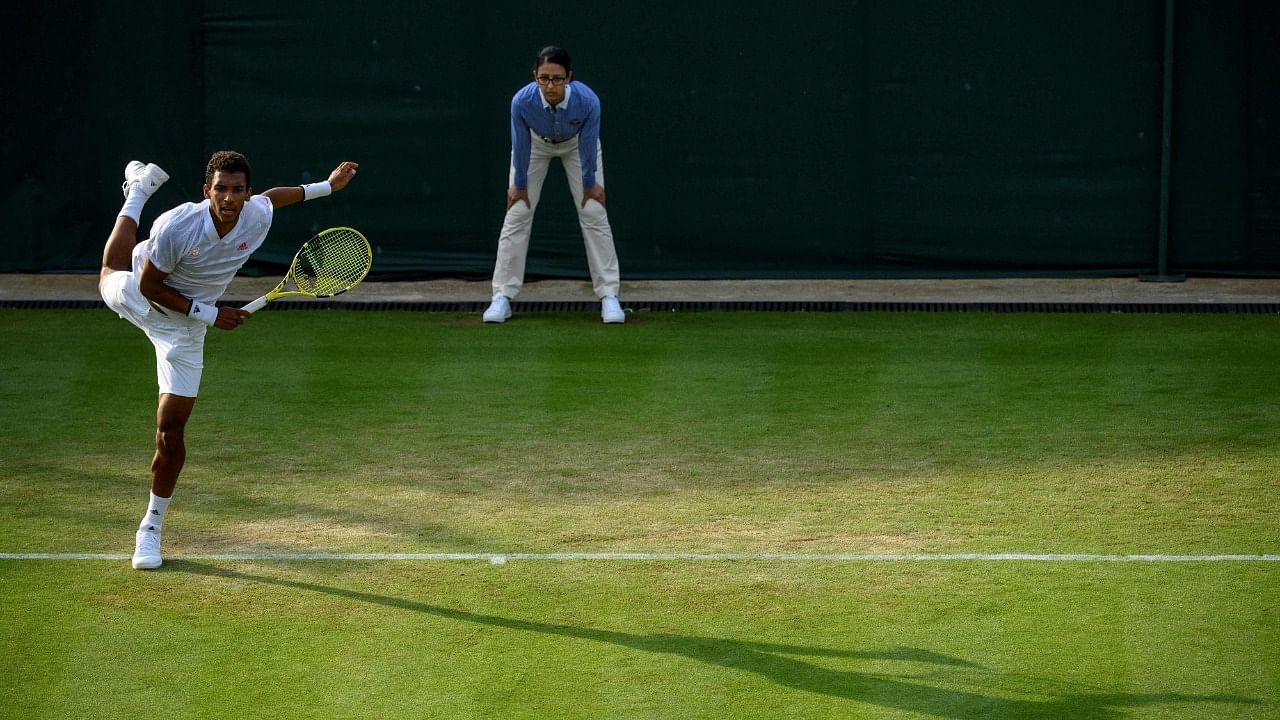
With 18 pristine competition grasscourts inside the beautifully landscaped All England Club, Wimbledon has no rival when it comes to which of the four tennis Grand Slam venues look the greenest.
But the world's most famous tennis tournament aims to take that a step further with ambitious targets to play its part in mitigating climate change and restoring biodiversity.
This year's tournament has served up a range of sustainability measures, including a massive crackdown on single-use plastic and the introduction of re-useable cups for the consumption of cold drinks, saving 500,000 plastic cups usually used during the fortnight.
Racket strings discarded by players will be ground down and recycled for the first time while the fleet of coaches transporting players to their central London hotel will be electrically-powered, as are the lawn-mowers that cut the grass.
Longer-term, Wimbledon says its target, by the year 2030, is to have a "positive" impact on the environment -- aiming to reduce emissions from its operations to 'net zero' and contribute a "net gain" in terms of biodiversity.
While the start of this year's eagerly-awaited Wimbledon has been damp and mild, tennis, like most sports, faces massive challenges ahead because of climate change.
Extreme heat is becoming a real concern and the 2020 Australian Open started under a cloud as devastating wildfires burned out of control across the nation.
Wimbledon says it wants to lead by example and is a signatory to the UN Sport for Climate Action Framework.
"We believe that the AELTC and The Championships have a meaningful role to play in helping to protect the environment, today and for the future," AELTC Chief Executive Sally Bolton said. "Changes to our climate are accelerating and we have a responsibility to play our part, mitigating our own impacts, ensuring we have a climate resilient estate for the future and using our influence to support this important cause."
The essence of Wimbledon is the way the site has been upgraded into a state-of-the-art sporting venue without losing the "English country garden" feel that makes it so unique.
Its 'living wall' on Court One hummed with insects on Thursday as the sun finally came out, while the Aorangi practice courts on in the south of the grounds where the players warm-up are flanked by a wildflower meadow.
More living walls will be integrated by 2030.
Wimbledon's expansion into the adjacent golf course, the next phase in the AELTC's long-term plan, will also be done in a way to mitigate the environmental impact, the club said.
"If planning permission is granted, we will create London's newest publicly accessible park, opening up 9.4 hectares (23 acres) of historic parkland for local residents, visitors and the wider community to benefit from and enjoy," the club said.
The plan will create 38 new grasscourts on which the qualifying tournament will be staged, including a new "Parkland Court" which would be become the third biggest showcourt after Centre Court and Court One.
Around 1,500 British-grown trees would be planted around the site together with nature refuges, the club added.